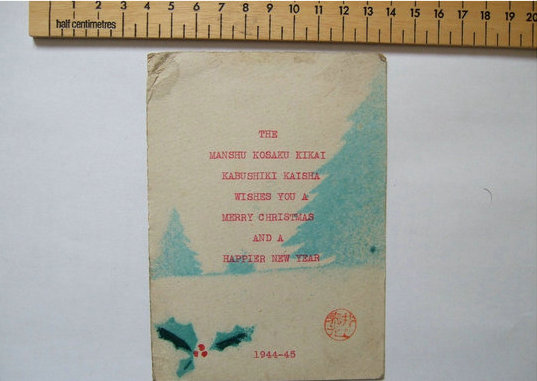 |
|
The Christmas card sent by the factory management to Gunner Joy in 1944.[Photo/China Daily] |
Gunner Joy spoke little about his experiences in Mukden, now known as Shenyang, but his family knew he had suffered.
"He suffered from nightmares. We all knew he was having a hard time," Alan Joy says.
Liberated in 1945, Gunner Joy was shipped home via Canada and resumed life with his family - he and his wife had three children, Alan and his two younger sisters, and he resumed his engineering career, eventually become a training manager in the engineering industry based in Bradford, his home town.
The camp is remembered in a special exhibition being staged in the northern English city of Liverpool.
Manchuria, the name given to the region that now comprises the provinces Heilongjiang, Liaoning and Jilin, was invaded by the Japanese, who set up what it called the 'independent' state of Manchukuo under the puppet emperor Pu Yi, the last of the Qing Dynasty.
The Japanese had set up a main camp in Mukden, along with nearby satellite camps, to hold US military personnel captured during its invasion of the Philippines, as well as British servicemen held after Singapore capitulated in 1942. Among them were so-called VIP prisoners, namely US General James Wainwright, who had led American troops in the Philippines, and General Arthur Percival, who had surrendered the British colony of Singapore to the invaders.
Mukden, now known as Shenyang Camp after the city it is located in, contained over 2,000 US, British, Australian, Canadian, French and Dutch personnel, and the camp's remains are the best preserved of almost 200 POW camps established by the Japanese throughout Asia.
|
|
|
|
|
|
|
|
